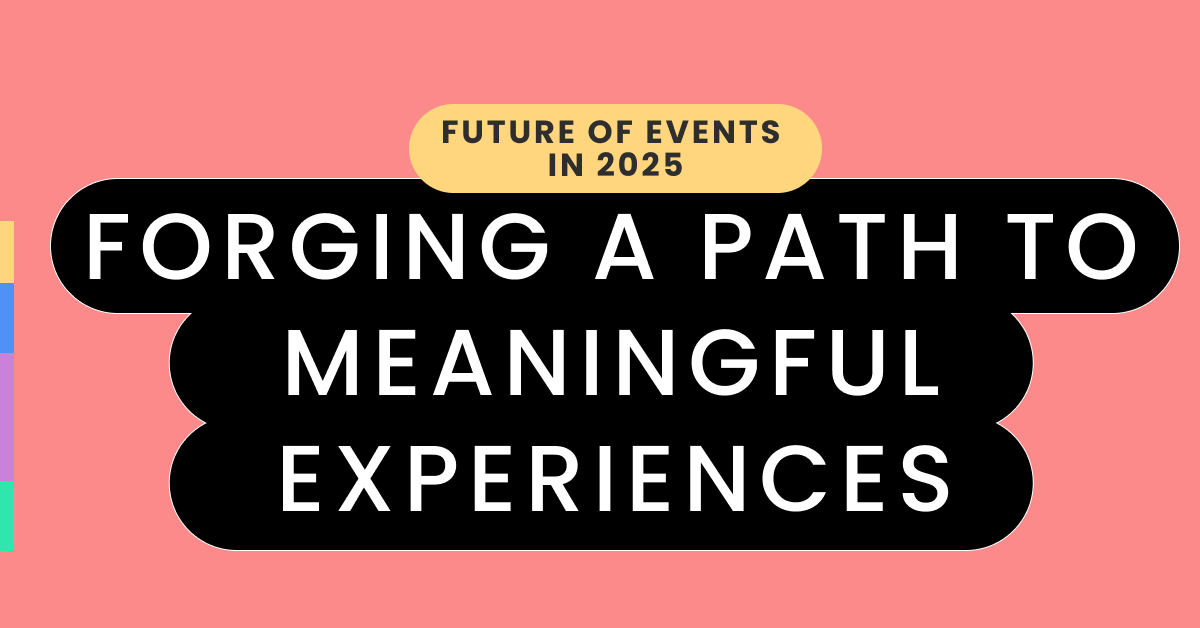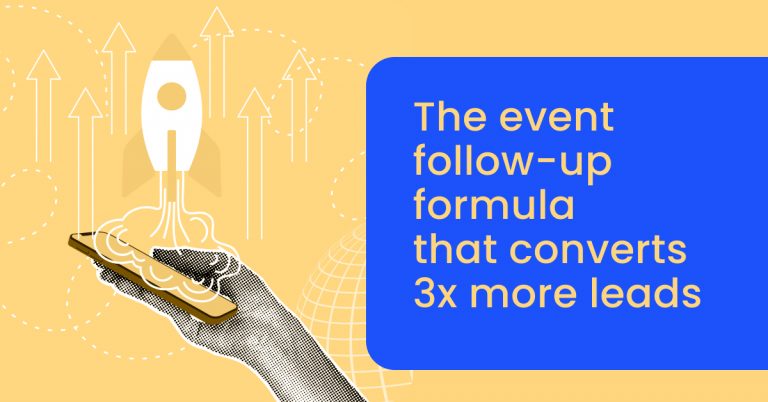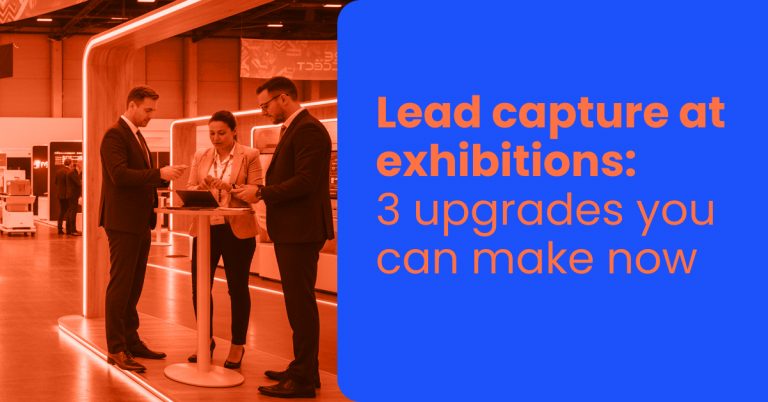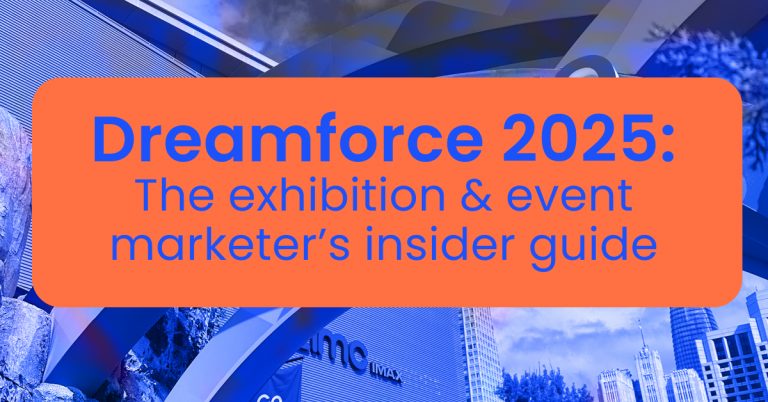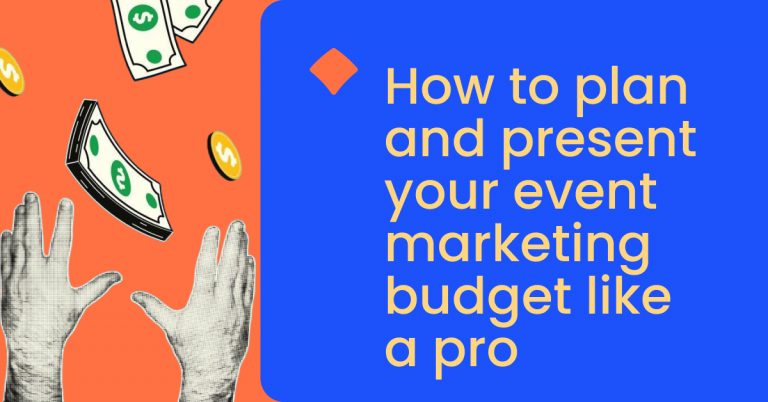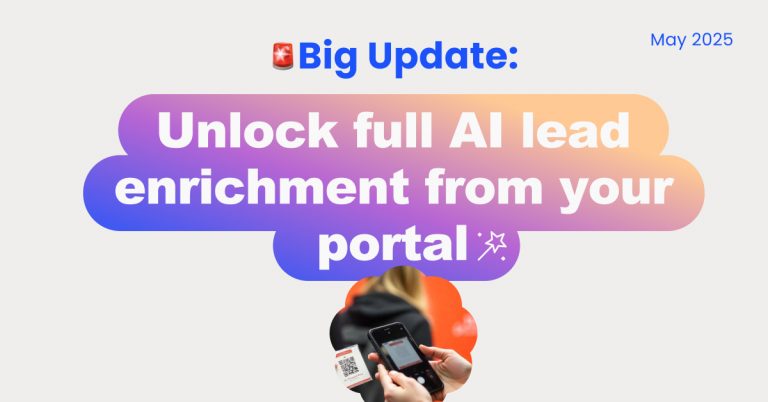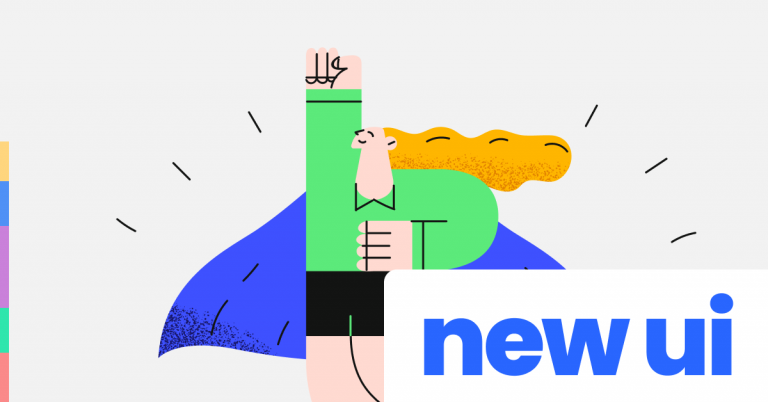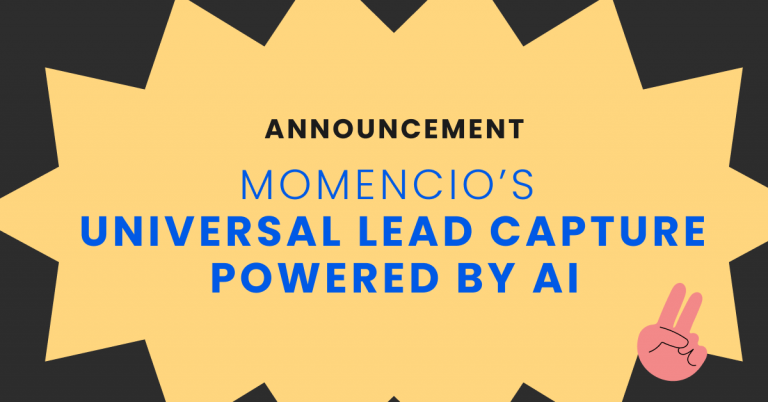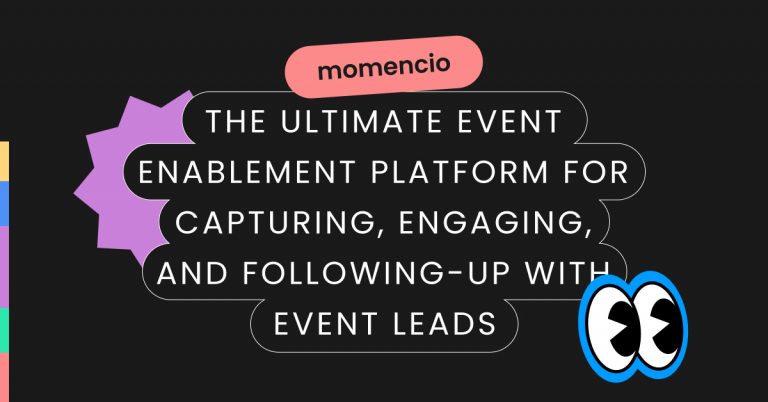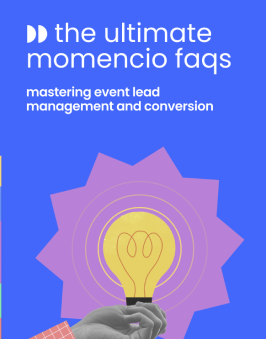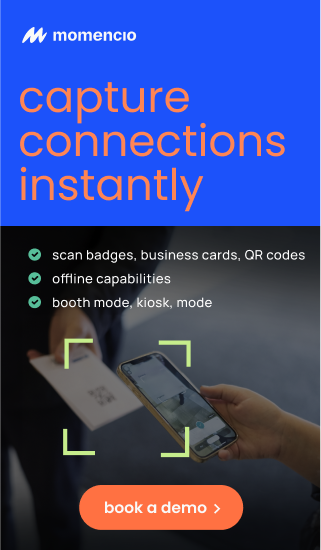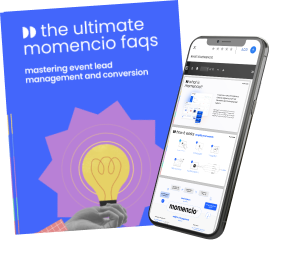The events industry has faced incredible uncertainty these past two years. Whilst the world has been in and out of lockdowns and restrictions, the future of events in 2025 carries a new promise for a return to the “normal”—or a “new normal”, at least. This can be said for the event industry as well. High vaccination rates and cities opening up once again have seen a slow but sure return to in-person events.
Once it is safe to do so, we believe the events industry is eager to get back larger and better than before. This has fueled new market trends that we predict will continue far into 2025. From hybrid events and increased health protocols to instant follow-ups, Read on for our top event industry trends for the year ahead!
TL;DR: The future of events in 2025 focuses on hybrid models, sustainability, and digital engagement. Learn about the trends shaping the event industry, from virtual experiences to advanced lead capture technologies, and how they will redefine attendee engagement and event success.
The future of events industry in 2025
The events industry in 2025 is poised for a tech-driven transformation, where hybrid experiences, AI-driven personalization, and sustainability take center stage. As businesses prioritize meaningful connections and data-backed strategies, events will evolve into immersive, purpose-driven engagements that blend innovation with impact.
1. The future of events: an increase in hybrid events
2024 was the year of the hybrid events. As we enter 2025, these events featuring a “live” in-person event with a “virtual” online component show no sign of slowing down — for many reasons.
Behavioral data collection is easier with virtual audiences, so hybrid events enhance reach and attendance. Additionally, they make it easier to prove ROI and ROE (Return on Event). If you have more attendee data on hand, you’ll be better equipped to arrange successful future events.
Delivering engaging, tailored event experiences for both in-person and virtual attendees will be the largest issue for event organizers and marketers in 2025.
After all, how can you offer distinctive experiences for virtual event attendees in comparison to in-person events?
Our advice is to choose event management software with features that lend well to both digital and in-person experiences. momencio, for example, lets you to share digital collateral such as videos, PDFs, html5 bundles, slideshows, and more. It also allows you to share personalized landing pages for an experience that converts online too.
Don’t forget to use data to create customized experiences based on attendee type. Additionally, make sure your event software and tech stack seamlessly integrate.
2. The future of events: health and safety will have greater importance than ever before
According to a study, 41% of event planners have cited health and safety concerns as the biggest obstacle to lagging attendees levels in 2024.
We anticipate an increase in hybrid and virtual events that can more readily guarantee attendee safety. Additionally, we expect to see a rise in the number of event organizers requiring confirmation of vaccination.
Extra Covid-19 safety precautions might include onsite testing, more frequent cleaning, social distancing where possible, providing adequate ventilation, mandatory mask-wearing, and having hand sanitizer at every booth or table, for example.
momencio’s Kiosk Mode is particularly helpful in reducing the risk of Covid-19 exposure at events. It lets attendees obtain the collateral they need at the touch of a button without directly contacting a salesperson at the event. Additionally, it swaps physical marketing documents for digital collateral. This not only reduces the handling of marketing material but can also have a hugely positive effect on the environment.
Moving forward, event organizers must keep these health and safety protocols at the forefront of their minds.
3. The future of events: instant follow-up will be a game changer
In previous years, it wasn’t uncommon for salespeople to wait a certain amount of time before following up with their event attendees. Gone are the days of outdated habits like the “cooling off period”. Instead, 2025 is seeing technology move at a more rapid pace than ever before.
The relationship you’ve built with your leads must continue beyond the event. In reality, 80% of event leads are never followed up on. This is owing to a lack of capabilities to track prospect engagement following tradeshows and events. That’s a lot of effort thrown away!
An excellent lead capture app should automate the follow-up process as much as possible. This is especially true for two critical emails: the instant follow-up and the post-event follow-up. Deepening lead engagement with relevant content is easier with an app that automatically delivers or schedules customized versions of these emails, like momencio.
If you’re looking for an all-in-one lead management solution to take your events into 2025 and beyond, momencio can help. Schedule a demo today to find out how our event lead capture app can help your business to succeed.
4. The future of events: sustainability as a key driver
As we look ahead to 2025, sustainability is no longer a “nice-to-have” for events—it’s a necessity. With rising awareness of environmental issues, both attendees and businesses are demanding greener solutions for their events. From reducing waste to lowering the carbon footprint of large-scale gatherings, sustainability is set to be a top priority.
Reducing paper waste: The days of handing out stacks of brochures, pamphlets, and business cards at events are dwindling. Instead, event organizers are leveraging digital tools to share materials. Digital brochures, virtual business cards, and event apps are not only cost-effective but also reduce significant amounts of waste. Features like momencio’s digital collateral library and presentations & interactive content are leading the way by offering seamless, environmentally friendly alternatives to traditional print materials.
Sustainable venues and practices: Event organizers are now actively choosing venues that adhere to sustainable practices, such as energy-efficient lighting, recycling programs, and locally sourced catering. Additionally, practices like carbon offset programs, reusable booth materials, and eco-friendly swag are becoming mainstream.
Virtual and hybrid options: By continuing to adopt hybrid models, organizers can significantly reduce the environmental impact of travel and accommodations for attendees. For example, allowing global participants to join virtually reduces the need for air travel, one of the largest contributors to event-related carbon emissions.
Sustainability as a branding opportunity: Companies that embrace green initiatives at their events not only contribute to the environment but also enhance their brand image. Attendees are more likely to engage with businesses that prioritize sustainability, making it a win-win for both the planet and the brand.
Actionable steps: To ensure sustainability at your events, invest in digital tools like momencio to minimize paper waste, collaborate with eco-friendly vendors, and educate attendees on the importance of green practices. Small changes, such as opting for plant-based catering or using solar-powered equipment, can collectively make a big impact.
5. The future of events: data and analytics redefine success
As event tech evolves, so does the ability to capture and analyze data. In 2025, data-driven decision-making is set to redefine what success looks like for events.
Data for personalization: Attendees now expect a tailored experience, and data is the key to delivering it. From registration to post-event surveys, every interaction provides valuable insights into attendee preferences. Event management platforms like momencio make it easier to track these interactions, enabling event organizers to design highly personalized experiences that resonate with their audience.
Predictive analytics: By analyzing historical event data, predictive analytics tools can help organizers forecast trends, attendance numbers, and even potential challenges. This forward-looking approach ensures better planning and resource allocation.
Real-time insights: Live events can now leverage real-time analytics to make immediate adjustments. For instance, if data shows that a particular session is drawing more attendees than expected, organizers can quickly provide additional seating or extend the session duration.
Measuring ROI and ROE: The ability to track behavioral data through tools like momencio allows organizers to demonstrate clear ROI and ROE. Metrics such as lead engagement, content downloads, and session attendance provide a comprehensive picture of event success.
Actionable steps: To harness the power of data, event organizers should invest in advanced analytics tools that integrate seamlessly with their tech stack. Regularly review and analyze data to identify trends and continuously improve event strategies.
6. The future of events: prioritizing accessibility and inclusivity
Events in 2025 will continue to push boundaries in creating spaces that are accessible and inclusive for all attendees, regardless of physical ability, language, or background.
Physical accessibility: Event venues are now being chosen with accessibility in mind, including features like wheelchair ramps, elevators, and designated seating. Additionally, event layouts are being designed to ensure ease of navigation for all attendees.
Digital inclusivity: For virtual and hybrid events, ensuring digital inclusivity is paramount. This includes providing closed captions for video content, sign language interpreters, and user-friendly platforms that cater to attendees with varying levels of tech proficiency.
Cultural inclusivity: As events become more global, organizers are focusing on cultural inclusivity by offering multilingual support, respecting diverse dietary needs, and avoiding culturally insensitive practices.
Neurodiversity-friendly events: Recognizing the needs of neurodiverse attendees is becoming a priority. This includes creating quiet zones, offering sensory-friendly environments, and providing clear schedules to reduce anxiety.
Actionable steps: Event organizers should conduct regular accessibility audits and gather feedback from attendees to identify areas for improvement. Partnering with accessibility consultants can also help ensure that events are truly inclusive.
7. The future of events: gamification for enhanced engagement
Gamification is not a new concept, but its application in events is set to reach new heights in 2025. By incorporating game-like elements, organizers can increase attendee engagement and make events more memorable.
Interactive sessions: Features like live polls, trivia, and Q&A sessions can keep audiences engaged, whether in-person or virtual. Tools like momencio can integrate gamified elements, such as interactive quizzes, into digital experiences.
Reward systems: Offering incentives for participation, such as digital badges, discounts, or exclusive content, can drive attendee involvement. For instance, virtual attendees could earn rewards for visiting digital booths or participating in sessions.
Networking games: Icebreaker games and networking challenges can make it easier for attendees to connect. For hybrid events, virtual matchmaking platforms can pair attendees with similar interests.
Actionable steps: To incorporate gamification, identify the key objectives of your event and design activities that align with them. Ensure that the gamified elements are intuitive and enjoyable for all attendees.
Conclusion
The events industry is on the brink of a remarkable evolution in 2025, blending innovation, sustainability, and inclusivity to create experiences that are more impactful than ever before. From hybrid events redefining reach and engagement to prioritizing health, safety, and accessibility, the future of events is driven by purpose and technology. By embracing trends like sustainability, real-time data analytics, and instant follow-ups, event organizers can not only meet but exceed the expectations of a more discerning audience.
The key to thriving in this new era is adaptability. With tools like momencio at your disposal, you can simplify event management, foster deeper connections, and stay ahead of the curve. As we step into 2025, the question isn’t whether the events industry will change—it’s how your business will seize the opportunities this change brings. The future of events is here, and it’s time to lead the way.
FAQs on the future of events
- What defines a hybrid event, and why are they becoming more popular?
- A hybrid event combines a “live” in-person element with a “virtual” online component, allowing for greater reach and attendance. These events have gained popularity due to their adaptability amidst ongoing Covid-19 restrictions and their ability to collect behavioral data easily from virtual audiences. Hybrid events offer a dynamic way to engage both in-person and remote attendees, making it easier to measure event success through ROI and ROE (Return on Event).
- How can event organizers deliver engaging experiences to both in-person and virtual attendees?
- Event organizers can deliver engaging experiences by utilizing event management software that supports both digital and in-person interactions. Tools like momencio offer features for sharing digital collateral, such as videos and personalized landing pages, ensuring a captivating experience for online attendees. Additionally, using data to tailor experiences based on attendee type and ensuring seamless integration of event software and tech stacks are crucial.
- What health and safety measures are becoming standard at events due to Covid-19?
- Health and safety measures at events now often include onsite testing, increased cleaning frequencies, social distancing practices, enhanced ventilation, mandatory mask-wearing, and accessible hand sanitization stations. Event organizers are also moving towards requiring proof of COVID-19 vaccination from attendees to ensure everyone’s safety.
- How is technology changing the way follow-ups are done post-event?
- Technology is eliminating the need for a “cooling off period” after events, enabling instant follow-ups with leads. Modern lead capture apps automate the follow-up process, sending critical emails immediately after the event and scheduling personalized content delivery. This rapid engagement helps deepen the relationship with leads, addressing the issue where 80% of event leads previously went unfollowed.
- What role does momencio play in adapting to the future of events?
- momencio serves as an all-in-one lead management solution, enhancing both hybrid events and health and safety measures. Its Kiosk Mode reduces direct contact at events by offering digital collateral at the touch of a button. By automating instant follow-ups and providing a suite of tools for engaging virtual and in-person attendees, momencio is pivotal in helping businesses navigate the evolving landscape of event marketing.
